Overview of Solar–Wind Hybrid Products: Prominent Challenges and Possible Solutions
Abstract
:1. Introduction
1.1. Top Original Equipment Manufacturers and Developers
1.2. Structure and Approach
2. Solar–Wind Hybrid Products
2.1. Pioneer Products
2.1.1. Europe’s First PV–Wind HPP: Parc Cynog
2.1.2. The Villas Carousel
- The development of these PV–wind hybrids was completed within a year. Therefore, the development of these pioneer solar–wind hybrid microgenerators could be concluded to be significantly easy.
- Out of the 15, 11 of the wind generators were installed on the hotel’s roof alongside the panels.
- The microgenerators were wired to power specific devices in the hotel while larger loads were connected to the grid to ensure smooth running, not the hotel. This highlights another problem of these pioneer systems: due to technological limitations, such devices could not produce sufficient power for large-scale commercialization.
- During its 12-month operation, the systems worked for 4439 h, generating a total of 448 kWh. Daily generation was recorded to be 2–5 times higher than daily consumption. This points out that the problem of excess generation was evident from pioneer projects and evaded solution since.
- The PV generation was always twice that of the wind generator, although the wind turbines installed had twice the generating capacity of the solar systems, and the wind profile of the region was favorable. Thus, the wind system was hindered by the operational conditions of the system as it could only produce for less than 200 h per month while the PV generated for over 350 h per month.
- The battery suffered overheating and outgassing caused by the unsuitability of the system control strategy in such generating conditions. This problem was solved.
2.1.3. Polanco’s and Fraunhofer’s Hybrid System
2.1.4. Some Important Facts from Pioneer Systems
- The photovoltaic components (especially the solar module) were (and still are) the most reliable and least troublesome components in these hybrids [21].
- One of the most popular options then, lead-acid batteries, had short 3–5 year life spans. These batteries were equally problematic and required various maneuvers to sustain the operation.
- Pioneer products suffered technological limitations; as a result, they were constructed such that they could not produce sufficient power for large-scale commercialization [21].
- Inverters were inefficient.
- The wind systems in such hybrids are more hindered by the operational conditions than the PV systems.
- According to calculations made for the pioneer solar–wind products of 1997, pure photovoltaic systems were cheaper than hybrid systems. PV systems were valued at USD 2.63/kWh, hybrid systems at USD 3.38/kWh, and conventional systems at USD 4.06/kWh.
- The Kavithal project (commissioned in 2018). This solar–wind hybrid was installed by Hero Future Energies and Siemens Gamesa in India. The plant’s capacity was 50 MW wind, 28.8 MW PV, and 0 MW/MWh storage. In other words, its ratio was 63% wind and 37% PV powered [22].
- Kennedy Energy Park in Australia (2017) was installed by Window and Eurus Energy. The plant’s capacity was 43 MW wind, 15 MW PV, and 2/4 MW/MWh storage. In other words, its capacity was 74% wind, 26% PV, and 3% storage. This project was the first solar PV–wind hybrid developed to understand the market [1,23].
- Minnesota’s community solar-wind project (2018) was completed by Juhl Energy (GE partner). The plant’s capacity was 5 MW wind, 0.5 MW PV, and 0 MW/MWh storage. In other words, its capacity was 90% wind 10% PV.
- Ollagüe, Chile, microgrid (2013), installed by Enel Green Power of the United States, was and still is used to supply a remote area not covered by the national grid. The plant’s capacity was 0.3 MW wind, 0.205 MW PV, and 0.3/0.8 MW/MWh storage. In other words, its capacity was 59% wind, 41% PV, and 59% storage [24].
- The H2020 research consortium installed the Tilos hybrid plant (started in 2018) in Greece [25]. The plant’s capacity was 0.8 MW wind, 0.16 MW PV, and 0.8/2.4 MW/MWh storage. In other words, its capacity was 83% wind, 17% PV, and 59% storage. This microgrid can supply 70% of the island’s power demand. Nonetheless, it is highly vulnerable to maintenance issues due to the roughness of the sea [1].
- Younicos installed the Gracioso hybrid project in Portugal. This plant can also sustain 70% of the island’s entire load. The plant’s capacity was 4.5 MW wind, 1 MW PV, and 6/3.2 MW/MWh storage. In other words, its capacity was 81% wind, 19% PV, and 100% storage.
2.2. Key Product Types
Categories of Solar–Wind HPPs
- Wind and solar plants sharing the same substation;
- Photovoltaic (PV) panels integrated into wind farms.

2.3. Current Top Products
- Consolidating competitive profit margins;
- Government and industry regulations.
- Blue Pacific Solar;
- Windmills;
- ReGen Powertech;
- Siemens Gamesa;
- UNITRON Energy System Pvt. Ltd.;
- Supernova Technologies Pvt. Ltd.;
- Alternate Energy Company;
- Grupo Dragon;
- Polar Power, Inc.
2.4. Challenges Faced by the Top Products
2.4.1. Policy Setbacks
- Many countries with operational policies for renewable energy treat solar–wind hybrids as either solar or wind plants. Thus, there is no distinct regulatory framework governing solar–wind hybrid systems in several regions. As many governments announce their sustainability goals, more developers and OEMs enter the market, increasing the need for regulatory standards. Some countries are already strategically updating policies to suit the market [31,32]. This framework must begin with a clear definition of the HPPs to streamline policy execution [1].
- Policies that standardize metering, grid supply requirements, and traceability procedures for renewable energy should be implemented [1]. These policies will make the hybrid plants easier to implement.
- As shown from the example on the German grid, most of these renewable energy plants produce more than required. Therefore, policies should be made to allow HPP developers to install whole plants with capacities beyond existing or standard grid connection capacities, even at the expense of curtailing some of the power generated (as in the German case study). Installing the total capacity of these plants will ensure an uninterrupted supply even during peak periods for solar or wind, thereby fully utilizing the potential of HPPs [1].
- HPPs that have integrated storage systems should be covered by a clear regulatory framework to guide monitoring procedures for energy flow between the storage device and the consumers. In a similar manner, additional taxes and charges must be expunged [1]. Storage device integration might require subsidies from government bodies [20].
- Governments should foster hybridization by extending grid connection standards to developers hybridizing already functional renewable energy plants. Such developers should not be made to re-apply for connection compliance so far as the plant’s new capacity does not effectively go beyond the capacity approved in the previous connection compliance licenses [1].
2.4.2. Case Study: India’s Enabling Policies
- The removal of additional connectivity and transmission charges for the hybridization of existing plants.
- When allowed, the additional transmission access to existing energy farms mandates the transmission augmentation for substation evacuation to be entirely on the developer.
- The government reserves the right to auction existing plants for hybridization and start new hybrid projects [7].
- The storage system (battery or otherwise) can generate power with a lower variability to ensure a higher productivity for the installed capacity [34].
- The accelerated depreciation (AD) policy;
- The annual power purchase cost (APPC);
- The feed-in tariff (FIT);
- The power purchase agreement (PPA);
- The renewable purchase obligation (RPO);
- The viability gap funding (VGF).
2.4.3. Storing Electricity
- Electrochemical (dry batteries): lithium-ion (LI), metal–air (MA), nickel-metal hydride (NMH), nickel-cadmium (NiCd), and polysulphide bromide (PSB).
- Electrochemical capacitor (EC) wet batteries: lead-acid (LA), sodium-sulfur (NaS), valve-regulated lead-acid (VRLA), and zero emission battery research activity (ZEBRA).
- Flow batteries (FB): vanadium redox (AVR), vanadium bromide redox (VBR), and zinc bromine (ZnBr).
- Chemical: fuel cell (FC), synthetic natural gas (SNG), and electrolyzer (EZ).
- Electromagnetic: capacitors, superconducting magnetic energy storage (SMES), supercapacitor (SC), and superconducting coil (SCC).
- Mechanical flywheel energy storage (FES), compressed air storage (CAS), and pumped storage arrangement (PSA).
- Thermal: cryogenic energy storage (CES), ice-based technology (IBT), electric thermal heaters (ETH), and pumped heat storage (PHS).
- Pumped storage is utilized for hydropower and has a 70–80% efficiency and fast response rate. Pumped storage is used in a few plants in Germany [36].
- Compressed air storage is conducted in sealed caverns. Excess power from the grid is used to drive a compressor via electric motors. This compressed air is then cooled and stored (60–70 bar). The compressed air is drawn back and heated to run a modified gas turbine. The United States and Germany have been operating such kinds of storage. Compressed air storage can also be used for renewable systems [39].
- Thermal storage involves storing energy in the form of heat energy [40]. This is achieved by heating insulated masses or performing a phase change of substantial materials. The first commercial solar thermal storage power plant is located in Spain.
- Flywheels store rotational energy. A torque generator is used to release the stored energy. Flywheel storage is used to regulate short-duration frequency. It can be used to store renewable energy [41].
- Electromagnetic energy storage stores power by moving electricity into electromagnetic fields. Two leading technologies used in this form of storage are supercapacitors and superconductor magnetic energy storage (SMES).
- Batteries are increasingly popular in electricity storage. Several dependent technologies, especially electric cars, are driving this trend. Additionally, battery technologies (especially lithium-ion batteries) are becoming more advanced, and demand is going up. There are three massive battery storage plants in the United States. Other popular battery technologies are lead-acid, sodium-sulphur, zinc, and flow batteries [42].
2.4.4. Overproduction (Waste)
2.4.5. Case Study: Germany PV–Wind Hybrids
3. Excerpt from Product Reviews
3.1. Popular Focus Areas
- An iterative approach that involves hill-climbing, linear, and dynamic programming.
- The application of artificial intelligence such as fuzzy logic, generic algorithms, or artificial neural networks (ANNs).
- Software solutions that have also been proffered, including HOMER and GUI software solutions.
3.1.1. Africa
3.1.2. Asia
3.2. Selected Recent Studies on Solar–Wind Hybrids
Some Principal Challenges of New Proposals
- Cost of parts and spares: The cost of parts for the fabrication and manufacturing of hybrid systems has cropped up as a significant setback to research in space. Unfortunately, most of the sites and regions where the PV–wind hybrid system can best achieve full potential are in areas with low purchasing power and medium purchasing power in rare cases. This was identified from studies conducted in Nigeria, Zimbabwe, Kenya, India, Pakistan, Malaysia, Iraq, Bangladesh, and Zimbabwe [63,66,67,68,70,71,72,73,74,76,77,78,81,82]. This affects the quality of research in these areas as researchers are forced to limit their research to simulations and theoretical analysis. The cost of parts also affects research to push scientists towards over-improvisation, which may be cheap but reduces the quality of research output. The PV–wind costing structure also needs to be simplified so that consumers understand the allocation of expenses. Mari and Nabona [83] provided a simplified framework for understanding wind–PV hybrid generation expenses by dividing them into five major parts: initial investment, operation, and maintenance (O&M) cost; equipment replacement cost; hybrid power generation; grid exchange cost; and utility regulation cost [83].
- Appropriate design implementation: Proper design implementation is a challenge as most studies to design prototypes either fail to implement these designs or resort to simulation. Unfortunately, simulations do not comprehensively mirror real-life situations. Design implementation is essential as it highlights paths for fabrication and challenges of specific designs in real life. Additionally, due to these simulation constraints, the solutions proposed in some studies do not adequately match the actual devices produced, possibly due to fabrication modifications.
- Scalability: Several proposed solutions face various challenges in design implementation for mass production. All research aims to solve real-life problems and improve people’s lives; therefore, designs have to meet the criteria of functionality, ease of use, lightness in use (weight), durability, and aesthetics (optional). These are characteristics of most mass-produced goods. Therefore, designs should strive to meet the minimum for future implementation and possible usage.
- Streamlining research;
- Energy storage system;
- Cost of system components;
- Need for windmill poles at the appropriate height for proper utilization of wind energy;
- Possibility of grid connection to sell excess power to the grid and buy in times of low energy production;
- IoT enables PV panel sensitivity to tilt to the appropriate angle for proper solar energy utilization.
3.3. Major Challenges of Solar–Wind Hybrids
3.3.1. Policy Challenges
3.3.2. Overproduction or Over-Generation
3.3.3. Storage: A Solution to Overproduction
3.4. Key Takeaways
4. Conclusions and Recommendations
Author Contributions
Funding
Data Availability Statement
Conflicts of Interest
References
- Wind Europe. Renewable Hybrid Power Plants: Exploring the Benefits and Market Opportunities. 2019. Available online: https://windeurope.org/wp-content/uploads/files/policy/position-papers/WindEurope-renewable-hybrid-power-plants-benefits-and-market-opportunities.pdf (accessed on 8 August 2021).
- Jiménez-Torres, M.; Rus-Casas, C.; Lemus-Zúiga, L.G.; Hontoria, L. The Importance of Accurate Solar Data for Designing Solar Photovoltaic Systems—Case Studies in Spain. Sustainability 2017, 9, 247. [Google Scholar] [CrossRef]
- Nfaoui, M.; El-Hami, K. Extracting the maximum energy from solar panels. Energy Rep. 2018, 4, 536–545. [Google Scholar] [CrossRef]
- Lledó, L.; Torralba, V.; Soret, A.; Ramon, J.; Doblas-Reyes, F. Seasonal forecasts of wind power generation. Renew. Energy 2019, 143, 91–100. [Google Scholar] [CrossRef]
- Miller, L.M.; Keith, D.W. Climatic Impacts of Wind Power. Joule 2018, 2, 2618–2632. [Google Scholar] [CrossRef]
- Okokpujie, I.P.; Akinlabi, E.T.; Okonkwo, U.C.; Babaremu, K.O.; Okokpujie, K.O. Experimental evaluation, modeling and optimaztion of a 500 W horizontal wind turbine using definitive screen design method for sustainable wind power generation. Int. J. Civ. Eng. Technol. 2019, 10, 2415–2431. [Google Scholar]
- Das, A.; Jani, H.K.; Nagababu, G.; Kachhwaha, S.S. A comprehensive review of wind–solar hybrid energy policies in India: Barriers and Recommendations. Renew. Energy Focus 2020, 35, 108–121. [Google Scholar] [CrossRef]
- Etim, M.A.; Babaremu, K.; Lazarus, J.; Omole, D. Health risk and environmental assessment of cement production in Nigeria. Atmosphere 2021, 12, 1111. [Google Scholar] [CrossRef]
- Kehinde, O.; Babaremu, K.; Akpanyung, K.V.; Remilekun, E.; Oyedele, S.T.; Oluwafemi, J. Renewable energy in Nigeria-a review. Int. J. Mech. Eng. Technol. 2018, 9, 1085–1094. [Google Scholar]
- GrandView Research. Hybrid Solar Wind Systems Market Size, Share Report 2020–2027. 2020. Available online: https://www.grandviewresearch.com/industry-analysis/hybrid-solar-wind-systems-market (accessed on 2 August 2021).
- International Renewable Energy Agency. Policies and Regulations for Renewable Energy Mini-Grids. 2020. Available online: https://www.irena.org/publications/2018/Oct/Policies-and-regulations-for-renewable-energy-mini-grids (accessed on 2 August 2021).
- Zebra, E.I.C.; van der Windt, H.J.; Nhumaio, G.; Faaij, A.P. A review of hybrid renewable energy systems in mini-grids for off-grid electrification in developing countries. Renew. Sustain. Energy Rev. 2021, 144, 111036. [Google Scholar] [CrossRef]
- International Energy Agency. COVID-19 and the Resilience of Renewables—Renewables 2020—Analysis—IEA. 2020. Available online: https://www.iea.org/reports/renewables-2020/COVID-19-and-the-resilience-of-renewables (accessed on 2 August 2021).
- International Energy Agency. COVID-19 Impact on Renewable Energy Growth—Renewable Energy Market Update—Analysis—IEA. 2020. Available online: https://www.iea.org/reports/renewable-energy-market-update/COVID-19-impact-on-renewable-energy-growth (accessed on 2 August 2021).
- Google Trends. Solar Wind Hybrid, Solar, Wind Power—Explore—Google Trends. 2021. Available online: https://trends.google.com/trends/explore?date=today%205-y&q=Solar%20wind%20hybrid,Solar,Wind%20power (accessed on 2 August 2021).
- Vartiainen, E.; Masson, G.; Breyer, C.; Moser, D.; Román Medina, E. Impact of weighted average cost of capital, capital expenditure, and other parameters on future utility-scale PV levelised cost of electricity. Prog. Photovolt. Res. Appl. 2020, 28, 439–453. [Google Scholar] [CrossRef]
- BloombergNEF. Cost of New Renewables Temporarily Rises as Inflation Starts to Bite|BloombergNEF. Available online: https://about.bnef.com/blog/cost-of-new-renewables-temporarily-rises-as-inflation-starts-to-bite/ (accessed on 4 August 2022).
- US Energy Information Administration. Levelized Costs of New Generation Resources in the Annual Energy Outlook; US Energy Information Administration: Washington, DC, USA, 2022.
- Al-Ghussain, L.; Samu, R.; Taylan, O.; Fahrioglu, M. Techno-Economic Comparative Analysis of Renewable Energy Systems: Case Study in Zimbabwe. Inventions 2020, 5, 27. [Google Scholar] [CrossRef]
- Klonari, V.; Fraile, D.; Rossi, R.; Schmela, M. Exploring the Viability of Hybrid Wind-Solar Power Plants. May 2019. Available online: https://hybridpowersystems.org/crete2019/wp-content/uploads/sites/13/2020/03/3A_1_HYB19_063_paper_Klonari_Vasiliki.pdf (accessed on 2 August 2022).
- Office of Scientific and Technical Information. Photovoltaic-wind hybrid systems for remote power supply. Workshop. [Selected Papers]. 2020. Available online: https://www.osti.gov/etdeweb/servlets/purl/334177 (accessed on 2 August 2021).
- Agrawal, D.; Sharma, R.; Ramteke, M.; Kodamana, H. Hierarchical two-tier optimization framework for the optimal operation of a network of hybrid renewable energy systems. Chem. Eng. Res. Des. 2021, 175, 37–50. [Google Scholar] [CrossRef]
- Kennedy Energy Park—Australian Renewable Energy Agency (ARENA). Available online: https://arena.gov.au/projects/kennedy-energy-park/ (accessed on 4 August 2022).
- Abbey, C.; Cornforth, D.; Hatziargyriou, N.; Hirose, K.; Kwasinski, A.; Kyriakides, E.; Platt, G.; Reyes, L.; Suryanarayanan, S. Powering Through the Storm: Microgrids Operation for More Efficient Disaster Recovery. IEEE Power Energy Mag. 2014, 12, 67–76. [Google Scholar] [CrossRef]
- Kaousias, K.; Xygkis, T.; Papoutsis, G.; Stavropoulou, E.; Patsaka, T.; Kourelis, C.; Mantas, Z.; Kaldellis, J.; Pronios, C.; Delaplagne, T.; et al. The European research project ‘TILOS. 2018 CIGRE Session. 2018, pp. 1–10. Available online: https://www.scopus.com/record/display.uri?eid=2-s2.0-85070873069&origin=inward&txGid=2d5c32ac86178d703d0f50969f4bf668&featureToggles=FEATURE_NEW_DOC_DETAILS_EXPORT:1,FEATURE_EXPORT_REDESIGN:0 (accessed on 4 August 2022).
- Innovation in Storage Technology: Siemens Gamesa Tests Redox Flow Battery at Its La Plana Test Site in Spain. Available online: https://www.siemensgamesa.com/newsroom/2018/05/innovation-storage-technology (accessed on 4 August 2022).
- Lawan, S.M.; Abidin, W.A.W.Z. A Review of Hybrid Renewable Energy Systems Based on Wind and Solar Energy: Modeling, Design and Optimization. In Wind Solar Hybrid Renewable Energy System; Books on Demand: Norderstedt, Germany, 2020; pp. 2–24. [Google Scholar] [CrossRef]
- Ludwig, D.; Breyer, C.; Solomon, A.A.; Seguin, R. Evaluation of an onsite integrated hybrid PV-Wind power plant. AIMS Energy 2020, 8, 988–1006. [Google Scholar] [CrossRef]
- Fasihi, M.; Bogdanov, D.; Breyer, C. Techno-Economic Assessment of Power-to-Liquids (PtL) Fuels Production and Global Trading Based on Hybrid PV-Wind Power Plants. Energy Procedia 2016, 99, 243–268. [Google Scholar] [CrossRef]
- Fasihi, M.; Breyer, C. Baseload electricity and hydrogen supply based on hybrid PV-wind power plants. J. Clean. Prod. 2020, 243, 118466. [Google Scholar] [CrossRef]
- Liu, L.; Wang, Y.; Wang, Z.; Li, S.; Li, J.; He, G.; Li, Y.; Liu, Y.; Piao, S.; Gao, Z.; et al. Potential contributions of wind and solar power to China’s carbon neutrality. Resour. Conserv. Recycl. 2022, 180, 106155. [Google Scholar] [CrossRef]
- Kumar, A.; Pal, D.; Kar, S.K.; Mishra, S.K.; Bansal, R. An overview of wind energy development and policy initiatives in India. Clean Technol. Environ. Policy 2022, 24, 1337–1358. [Google Scholar] [CrossRef]
- Shrimali, G.; Nelson, D.; Goel, S.; Konda, C.; Kumar, R. Renewable deployment in India: Financing costs and implications for policy. Energy Policy 2013, 62, 28–43. [Google Scholar] [CrossRef]
- Government of India. Subject: Amendment in National Wind-Solar Hybrid Policy—Reg. 13 August 2018. Available online: https://mnre.gov.in/img/documents/uploads/41e72559eb1140d18ad1a082ec050426.pdf (accessed on 2 August 2021).
- Kumar, P.; Palwalia, D.K. Decentralized Autonomous Hybrid Renewable Power Generation. J. Renew. Energy 2015, 2015, 1–18. [Google Scholar] [CrossRef]
- Halbrügge, S.; Buhl, H.U.; Fridgen, G.; Schott, P.; Weibelzahl, M.; Weissflog, J. How Germany achieved a record share of renewables during the COVID-19 pandemic while relying on the European interconnected power network. Energy 2022, 246. [Google Scholar] [CrossRef]
- e Sousa, L.R.; Gouzhao, L.; Cafofo, P.; Sousa, R.L.; Gomes, A.T.; Dias, D.; Vargas, E. Underground pumped hydroelectric schemes: The Madeira Island case. Arab. J. Geosci. 2022, 15, 1–20. [Google Scholar] [CrossRef]
- Gao, R.; Wu, F.; Zou, Q.; Chen, J. Optimal dispatching of wind-PV-mine pumped storage power station: A case study in Lingxin Coal Mine in Ningxia Province, China. Energy 2021, 243, 123061. [Google Scholar] [CrossRef]
- Zhao, P.; Gou, F.; Xu, W.; Wang, J.; Dai, Y. Multi-objective optimization of a renewable power supply system with underwater compressed air energy storage for seawater reverse osmosis under two different operation schemes. Renew. Energy 2021, 181, 71–90. [Google Scholar] [CrossRef]
- Al-Ghussain, L.; Ahmad, A.D.; Abubaker, A.M.; Hassan, M.A. Techno-economic feasibility of thermal storage systems for the transition to 100% renewable grids. Renew. Energy 2022, 189, 800–812. [Google Scholar] [CrossRef]
- Li, X.; Palazzolo, A. A review of flywheel energy storage systems: State of the art and opportunities. J. Energy Storage 2021, 46, 103576. [Google Scholar] [CrossRef]
- Dicampli, J.; Donald, P.E.; Fimeche, L.C. State of the Art Hybrid Solutions for Energy Storage and Grid Firming State of the Art Hybrid Solutions for Energy Storage and Grid Firming. 2017. Available online: https://pt.slideshare.net/gepowerandwater/state-of-the-art-hybrid-solutions-for-energy-storage-and-grid-firming-by-ge-powers-james-dicampli (accessed on 2 August 2021).
- Prol, J.L.; O, S. Impact of COVID-19 Measures on Short-Term Electricity Consumption in the Most Affected EU Countries and USA States. iScience 2020, 23, 101639. [Google Scholar] [CrossRef]
- Danook, S.H.; Jassim, K.J.; Hussein, A.M. The impact of humidity on performance of wind turbine. Case Stud. Therm. Eng. 2019, 14, 100456. [Google Scholar] [CrossRef]
- Deign, J. Germany’s Maxed-Out Power Grid Is Causing Trouble Across Europe|Greentech Media. 31 March 2020. Available online: https://www.greentechmedia.com/articles/read/germanys-stressed-grid-is-causing-trouble-across-europe (accessed on 2 August 2021).
- Halbrügge, S.; Schott, P.; Weibelzahl, M.; Buhl, H.U.; Fridgen, G.; Schöpf, M. How did the German and other European electricity systems react to the COVID-19 pandemic? Appl. Energy 2021, 285, 116370. [Google Scholar] [CrossRef]
- Lund, P.D.; Lindgren, J.; Mikkola, J.; Salpakari, J. Review of energy system flexibility measures to enable high levels of variable renewable electricity. Renew. Sustain. Energy Rev. 2015, 45, 785–807. [Google Scholar] [CrossRef]
- Steffen, B.; Egli, F.; Pahle, M.; Schmidt, T.S. Navigating the Clean Energy Transition in the COVID-19 Crisis. Joule 2020, 4, 1137–1141. [Google Scholar] [CrossRef] [PubMed]
- Hosseini, S.E. An outlook on the global development of renewable and sustainable energy at the time of COVID-19. Energy Res. Soc. Sci. 2020, 68, 101633. [Google Scholar] [CrossRef] [PubMed]
- Jiang, P.; van Fan, Y.; Klemeš, J.J. Impacts of COVID-19 on energy demand and consumption: Challenges, lessons and emerging opportunities. Appl. Energy 2021, 285, 116441. [Google Scholar] [CrossRef] [PubMed]
- Werth, A.; Gravino, P.; Prevedello, G. Impact analysis of COVID-19 responses on energy grid dynamics in Europe. Appl. Energy 2021, 281, 116045. [Google Scholar] [CrossRef]
- Liu, S.; Yang, Z.; Xia, Q.; Lin, W.; Shi, L.; Zeng, D. Power trading region considering long-term contract for interconnected power networks. Appl. Energy 2020, 261, 114411. [Google Scholar] [CrossRef]
- Wu, J.; Wang, P. Post-Disruption Performance Recovery to Enhance Resilience of Interconnected Network Systems. Sustain. Resilient Infrastruct. 2019, 6, 107–123. [Google Scholar] [CrossRef]
- Pehlivanova, T.I.; Atanasov, A.K. Feasibility analysis of autonomous hybrid solar-wind system for household consumption: A case study. IOP Conf. Ser. Mater. Sci. Eng. 2021, 1031, 012043. [Google Scholar] [CrossRef]
- Mikati, M.; Santos, M.; Armenta, C. Electric grid dependence on the configuration of a small-scale wind and solar power hybrid system. Renew. Energy 2013, 57, 587–593. [Google Scholar] [CrossRef]
- Barange, A.; Mishra, A. Modeling of Grid Connected Hybrid Wind/PV Generation System Using MATLAB. Int. J. Ind. Electron. Electr. Eng. 2017, 5, 2393–2835. [Google Scholar]
- Kim, S.-K.; Kim, E.-S.; Ahn, J.-B. Modeling and Control of a Grid-connected Wind/PV Hybrid Generation System. In Proceedings of the IEEE Power Engineering Society Transmission and Distribution Conference, Caracas, Venezuela, 15–18 August 2006; pp. 1202–1207. [Google Scholar] [CrossRef]
- Gorla, R.S.R.; Salako, R. Feasibilty of Wind-Solar Hybrid System for Cleveland, Ohio, USA. Smart Grid Renew. Energy 2011, 2, 37–44. [Google Scholar] [CrossRef]
- Vick, B.D.; Clark, R.N.; Ling, J.; Ling, S. Remote Solar, Wind, and Hybrid Solar/Wind Energy Systems for Purifying Water. J. Sol. Energy Eng. 2003, 125, 107–111. [Google Scholar] [CrossRef]
- Hocaoğlu, F.O.; Gerek, N.; Kurban, M. A novel hybrid (wind–photovoltaic) system sizing procedure. Sol. Energy 2009, 83, 2019–2028. [Google Scholar] [CrossRef]
- Sopian, K.; Ibrahim, M.Z.; Daud, W.R.W.; Othman, M.Y.; Yatim, B.; Amin, N. Performance of a PV–wind hybrid system for hydrogen production. Renew. Energy 2009, 34, 1973–1978. [Google Scholar] [CrossRef]
- Ahmed, N.A.; Miyatake, M. A Stand-Alone Hybrid Generation System Combining Solar Photovoltaic and Wind Turbine with Simple Maximum Power Point Tracking Control. In Proceedings of the 2006 CES/IEEE 5th International Power Electronics and Motion Control Conference, Shanghai, China, 14–16 August 2006; pp. 1–7. [Google Scholar] [CrossRef]
- Wasonga, A.; Saulo, M.; Odhiambo, V. Solar-Wind Hybrid Energy System for New Engineering Complex; Technical University of Mombasa: Mombasa, Kenya, 2014; Volume 4, p. 80. [Google Scholar]
- Toual, B.; Mokrani, L.; Kouzou, A.; Machmoum, M. Control and Management of a Solar-Wind Hybrid System for Power Quality Improvement. J. Eng. Sci. Technol. 2018, 13, 1420–1439. [Google Scholar]
- Ahmed, S.; Banoudjafer, C.; Benachaiba, C. Fuzzy Intelligent Control for Solar-Wind Hybrid Renewable Power System. Electroteh. Electron. Autom. 2017, 65. Available online: https://scholar.google.fr/citations?view_op=view_citation&hl=fr&user=aT4cM7YAAAAJ&citation_for_view=aT4cM7YAAAAJ:eQOLeE2rZwMC (accessed on 16 August 2021).
- Muhammad, A.; Shodiya, S.; Ngala, G. Feasibility Study of Solar-Wind Hybrid Power System for Maiduguri Area of Nigeria. In Faculty of Engineering Seminar Series; December Issue; Department of Mechanical Engineering University of Maiduguri: Maiduguri, Nigeria, 2015; Volume 6, Available online: https://www.researchgate.net/publication/340628940_FEASIBILITY_STUDY_OF_SOLAR-WIND_HYBRID_POWER_SYSTEM_FOR_MAIDUGURI_AREA_OF_NIGERIA (accessed on 16 August 2021).
- Johnson, J.; Mondal, S.; Mondal, A.K.; Rana, S.; Pandey, J.K. Feasibility Study of a 200 kW Solar Wind Hybrid System. Appl. Sol. Energy 2018, 54, 376–383. [Google Scholar] [CrossRef]
- AlSharidah, M.E.; Dunford, W.G.; Feng, W. A new representation of the unintentional islanding test resonant function. In Proceedings of the INTELEC 2009—31st International Telecommunications Energy Conference, Incheon, Korea, 18–22 October 2009; pp. 1–6. [Google Scholar] [CrossRef]
- Nijhawan, P.; Eied, T.; Oberoi, A.S.; Med, T. An Innovative Design of a Solar-Wind Hybrid System. Int. J. Adv. Trends Comput. Sci. Eng. 2019, 8, 203–207. [Google Scholar] [CrossRef]
- Sikder, P.S.; Pal, N. Modeling of an intelligent battery controller for standalone solar-wind hybrid distributed generation system. J. King Saud Univ. -Eng. Sci. 2020, 32, 368–377. [Google Scholar] [CrossRef]
- Awasthi, A.; Karthikeyan, V.; Das, V.; Rajasekar, S.; Singh, A.K. Energy Storage Systems in Solar-Wind Hybrid Renewable Systems. In Smart Energy Grid Design for Island Countries; Springer: Cham, Switzerland, 2017; pp. 189–222. [Google Scholar] [CrossRef]
- Matai, A. Urban Integration of Solar-Wind Hybrid System. J. Basic Appl. Eng. Res. 2014, 1, 25–29. Available online: https://www.researchgate.net/publication/323150478_Urban_Integration_of_Solar-Wind_Hybrid_System (accessed on 16 August 2021).
- Al-Mamun, U.; Hasan, R.; Imam, A.S.M.S. Design and Analysis of a Solar-Wind Hybrid System. J. Power Electron. Power Syst. 2020, 10, 1–13. Available online: https://www.researchgate.net/publication/344367811_Design_and_Analysis_of_a_Solar-Wind_Hybrid_System (accessed on 16 August 2021).
- Mohiuddin, S.; Sheikh, M. Stabilization of Solar-Wind Hybrid Power System by Using SMES. Int. J. Electr. Comput. Eng. (IJECE) 2014, 4. [Google Scholar] [CrossRef]
- Budiman; Taqwa, A.; Kusumanto, R. IoT Technology Monitoring, Controlling and Data Logging for ATS on Grid Connected Solar-Wind Hybrid System. J. Physics Conf. Ser. 2019, 1167, 012021. [Google Scholar] [CrossRef]
- Al-Waeli, A.; Al-Asadi, K.A.; Abass, K. The Performance Assessment of Solar & Wind Hybrid System in Iraqi Climatic Conditions. Int. Res. J. Adv. Eng. Sci. 2019, 4, 64–70. Available online: https://www.researchgate.net/publication/334305134_The_Performance_Assessment_of_Solar_Wind_Hybrid_System_in_Iraqi_Climatic_Conditions (accessed on 16 August 2021).
- Rafai, A.; Rahman, N.; Iqrar, S.A. Optimal Design of Pole for Solar Wind Hybrid Energy System. Int. J. Eng. Inf. Syst. (IJEAIS) 2017, 1, 66–79. Available online: https://hal.archives-ouvertes.fr/hal-01580866 (accessed on 16 August 2021).
- MImteyaz, M.M.H.; Duraikannan, S.; Thiruchelvam, V.; Lakshmanan, R.; Susaipan, Y.S.L. Sustainable Nano Grid Design with Solar Wind Hybrid System for Off-Grid Rural Electrification. Solid State Technol. 2020, 63, 993–1002. Available online: https://solidstatetechnology.us/index.php/JSST/article/view/788 (accessed on 2 August 2021).
- Bakir, H.; Kulaksiz, A.A. Modelling and voltage control of the solar-wind hybrid micro-grid with optimized STATCOM using GA and BFA. Eng. Sci. Technol. Int. J. 2019, 23, 576–584. [Google Scholar] [CrossRef]
- Kose, F.; Aksoy, M.H.; Ozgoren, M. Experimental investigation of solar/wind hybrid system for irrigation in Konya, Turkey. Therm. Sci. 2019, 23, 4129–4139. [Google Scholar] [CrossRef]
- Nyemba, W.R.; Chinguwa, S.; Mushanguri, I.; Mbohwa, C. Optimization of the design and manufacture of a solar-wind hybrid street light. Procedia Manuf. 2019, 35, 285–290. Available online: https://www.sciencedirect.com/science/article/pii/S2351978919306778 (accessed on 2 August 2022). [CrossRef]
- Numbeo. Purchasing Power Index by Country 2020. 2020. Available online: https://www.numbeo.com/quality-of-life/rankings_by_country.jsp?title=2020&displayColumn=1 (accessed on 16 August 2021).
- Mari, L.; Nabona, N. Renewable Energies in Medium-Term Power Planning. IEEE Trans. Power Syst. 2015, 30, 88–97. [Google Scholar] [CrossRef]
- Clancy, J.M.; Curtis, J.; O Gallachoir, B. Modelling national policy making to promote bioenergy in heat, transport and electricity to 2030 – Interactions, impacts and conflicts. Energy Policy 2018, 123, 579–593. [Google Scholar] [CrossRef]
- Shrimali, G.; Srinivasan, S.; Goel, S.; Nelson, D. The effectiveness of federal renewable policies in India. Renew. Sustain. Energy Rev. 2017, 70, 538–550. [Google Scholar] [CrossRef]
- Mani, S.; Dhingra, T. Critique of offshore wind energy policies of the UK and Germany—What are the lessons for India. Energy Policy 2013, 63, 900–909. [Google Scholar] [CrossRef]
- Inês, C.; Guilherme, P.L.; Esther, M.-G.; Swantje, G.; Stephen, H.; Lars, H. Regulatory challenges and opportunities for collective renewable energy prosumers in the EU. Energy Policy 2020, 138, 111212. [Google Scholar] [CrossRef]
- Atuguba, R.A.; Tuokuu, F.X.D. Ghana’s renewable energy agenda: Legislative drafting in search of policy paralysis. Energy Res. Soc. Sci. 2020, 64, 101453. [Google Scholar] [CrossRef]
- Salomon, H.; Drechsler, M.; Reutter, F. Minimum distances for wind turbines: A robustness analysis of policies for a sustainable wind power deployment. Energy Policy 2020, 140, 111431. [Google Scholar] [CrossRef]
- Aized, T.; Shahid, M.; Bhatti, A.A.; Saleem, M.; Anandarajah, G. Energy security and renewable energy policy analysis of Pakistan. Renew. Sustain. Energy Rev. 2018, 84, 155–169. [Google Scholar] [CrossRef]
- Office of Energy Efficiency & Renewable Energy. Confronting the Duck Curve: How to Address Over-Generation of Solar Energy|Department of Energy. 2017. Available online: https://www.energy.gov/eere/articles/confronting-duck-curve-how-address-over-generation-solar-energy (accessed on 16 August 2021).
- Malysz, P.; Sirouspour, S.; Emadi, A. An Optimal Energy Storage Control Strategy for Grid-connected Microgrids. IEEE Trans. Smart Grid 2014, 5, 1785–1796. [Google Scholar] [CrossRef]
- Bae, Y.; Vu, K.; Kim, Y. Implemental Control Strategy for Grid Stabilization of Grid-Connected PV System Based on German Grid Code in Symmetrical Low-to-Medium Voltage Network. IEEE Trans. Energy Convers. 2013, 28, 619–631. [Google Scholar] [CrossRef]
- Siddique, R.; Al Faisal, A.; Raihan, M.A.H.; Asif, T.H. A theoretical analysis of controlling the speed of wind turbine and assemblage of solar system in the Wind Energy Conversion system. In Proceedings of the 2013 International Conference on Power, Energy and Control (ICPEC), Dindigul, India, 6–8 February 2013. [Google Scholar]
- Altin, M.; Hansen, A.D.; Barlas, T.K.; Das, K.; Sakamuri, J.N. Optimization of Short-Term Overproduction Response of Variable Speed Wind Turbines. IEEE Trans. Sustain. Energy 2018, 9, 1732–1739. [Google Scholar] [CrossRef]
- Xu, L.; Ruan, X.; Mao, C.; Zhang, B.; Luo, Y. An Improved Optimal Sizing Method for Wind-Solar-Battery Hybrid Power System. IEEE Trans. Sustain. Energy 2013, 4, 774–785. [Google Scholar] [CrossRef]
- Xie, Q.; Wang, Y.; Kim, Y.; Pedram, M.; Chang, N. Charge Allocation in Hybrid Electrical Energy Storage Systems. IEEE Trans. Comput. Des. Integr. Circuits Syst. 2013, 32, 1003–1016. [Google Scholar] [CrossRef]
- Makarov, Y.V.; Du, P.; Kintner-Meyer, M.C.W.; Jin, C.; Illian, H.F. Sizing Energy Storage to Accommodate High Penetration of Variable Energy Resources. IEEE Trans. Sustain. Energy 2011, 3, 34–40. [Google Scholar] [CrossRef]
- MacLay, J.D.; Brouwer, J.; Samuelsen, G.S. Dynamic analyses of regenerative fuel cell power for potential use in renewable residential applications. Int. J. Hydrog. Energy 2006, 31, 994–1009. [Google Scholar] [CrossRef]
- Taibi, E.; Miranda, R.; Vanhoudt, W.; Winkel, T.; Lanoix, J.-C.; Barth, F. Hydrogen from renewable power: Technology outlook for the energy transition. In International Renewable Energy Agency; IGEM House: Kegworth, UK, 2018; pp. 1–52. [Google Scholar]
- The Financial Times. Hydrogen: The Future of Energy Storage. 2021. Available online: https://www.ft.com/content/c3526a2e-cdc5-444f-940c-0b3376f38069 (accessed on 16 August 2021).
- Widera, B. Renewable hydrogen as an energy storage solution. E3S Web Conf. 2019, 116, 00097. [Google Scholar] [CrossRef]
- Yan, Z.; Hitt, J.L.; Turner, J.A.; Mallouk, T.E. Renewable electricity storage using electrolysis. Proc. Natl. Acad. Sci. 2020, 117, 12558–12563. [Google Scholar] [CrossRef]
- Hou, B.; Hong, J.; Chen, Q.; Shi, X.; Zhou, Y. Do academia-industry R&D collaborations necessarily facilitate industrial innovation in China? Eur. J. Innov. Manag. 2019, 22, 717–746. [Google Scholar] [CrossRef]
- Hillerbrand, R.; Werker, C. Values in University–Industry Collaborations: The Case of Academics Working at Universities of Technology. Sci. Eng. Ethic- 2019, 25, 1633–1656. [Google Scholar] [CrossRef]
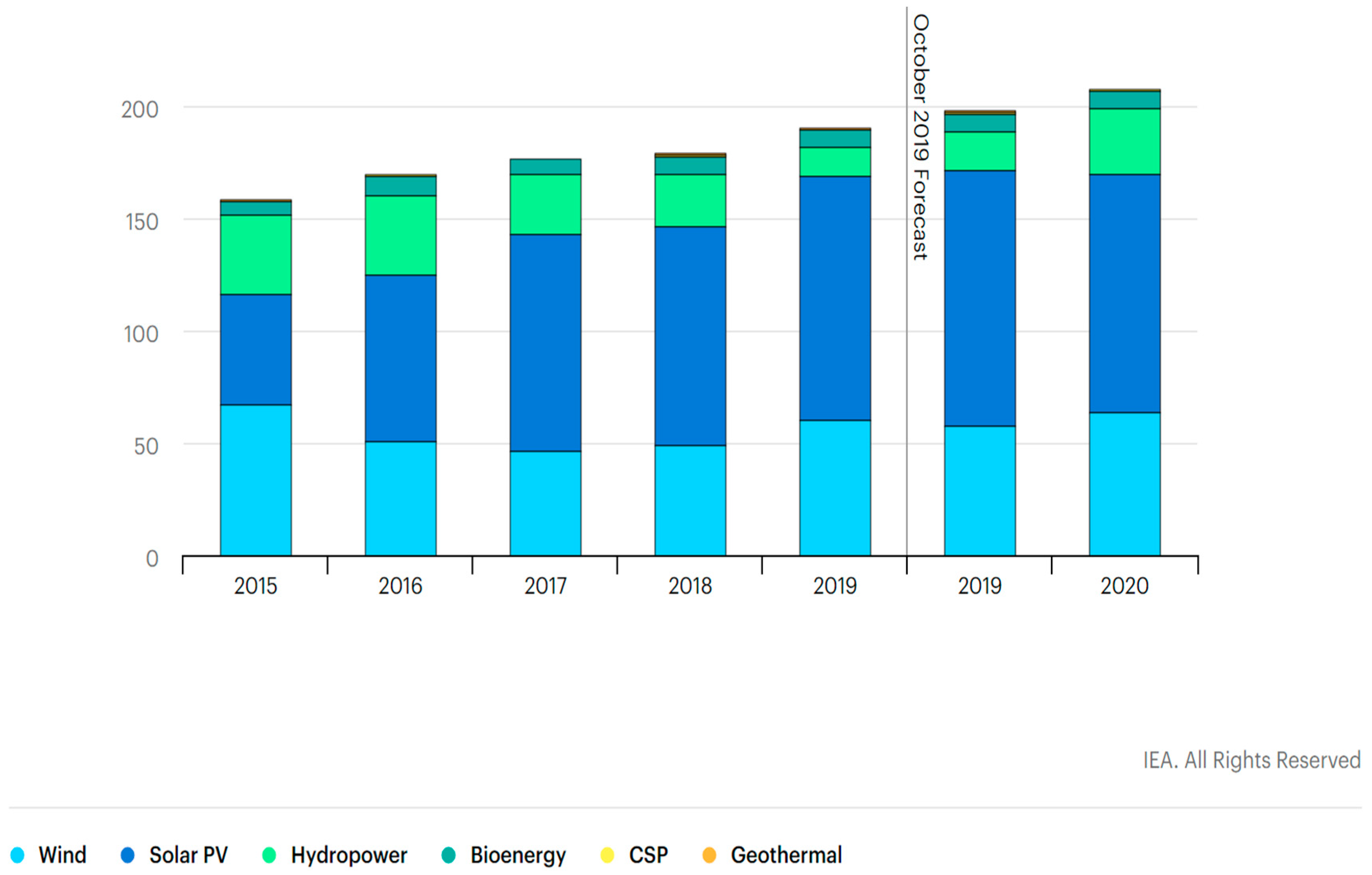


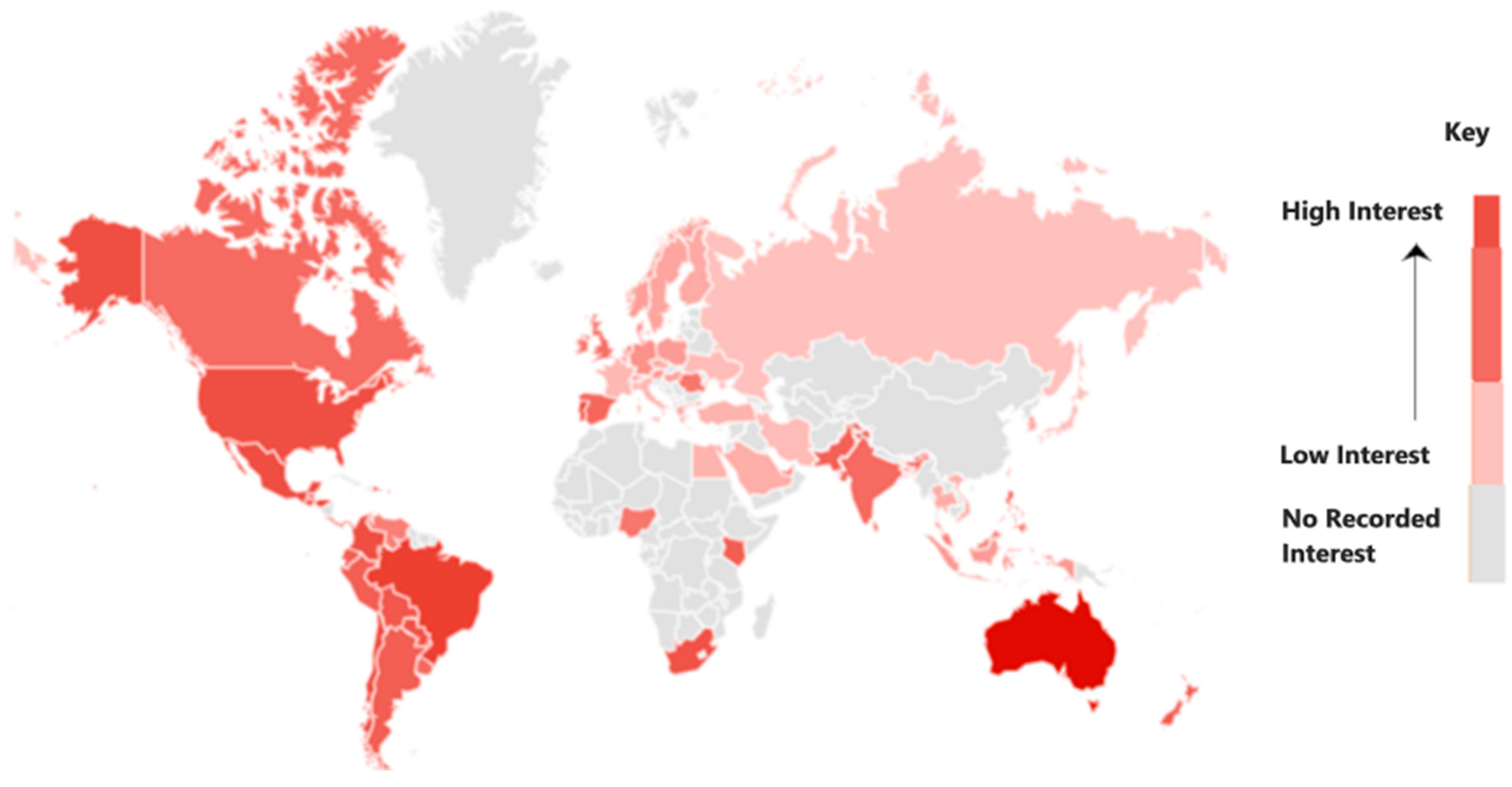
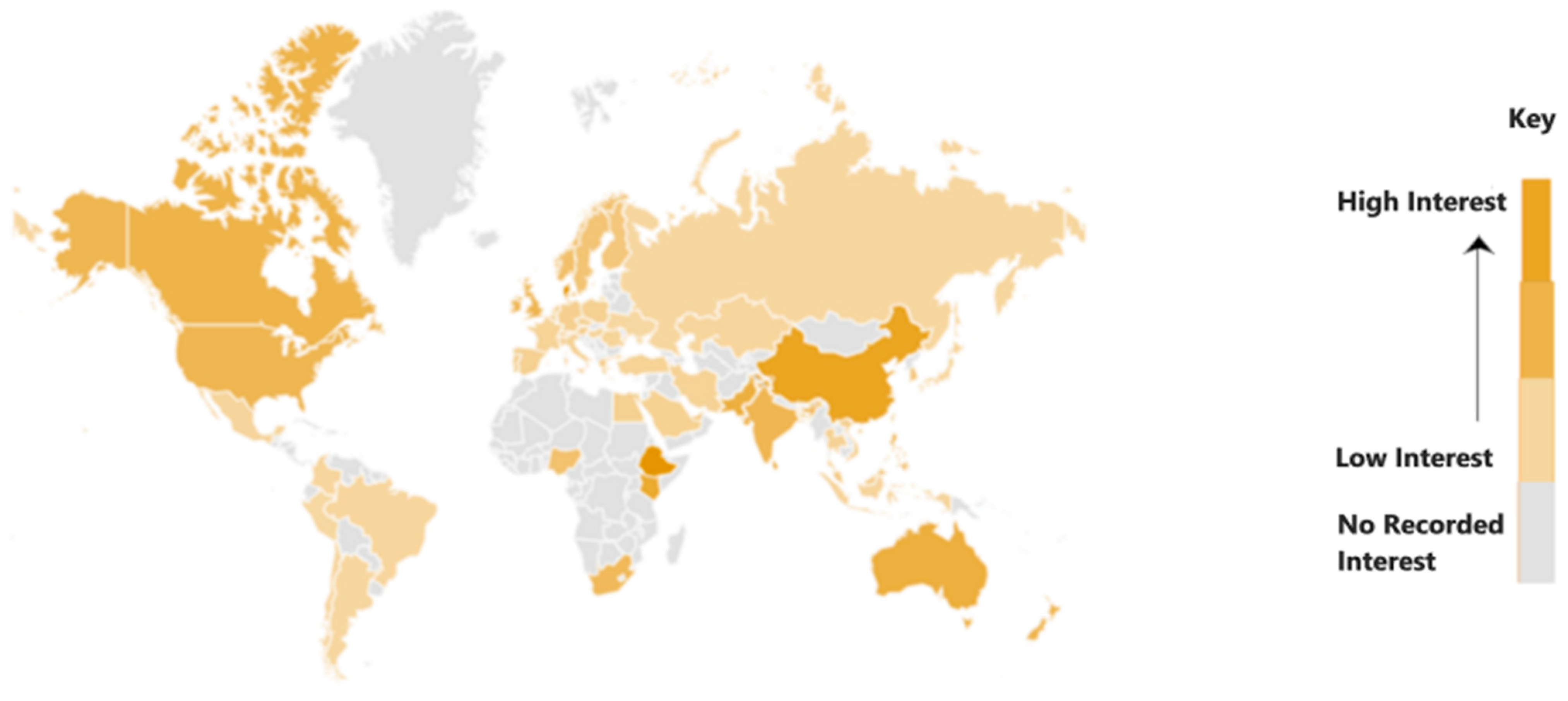
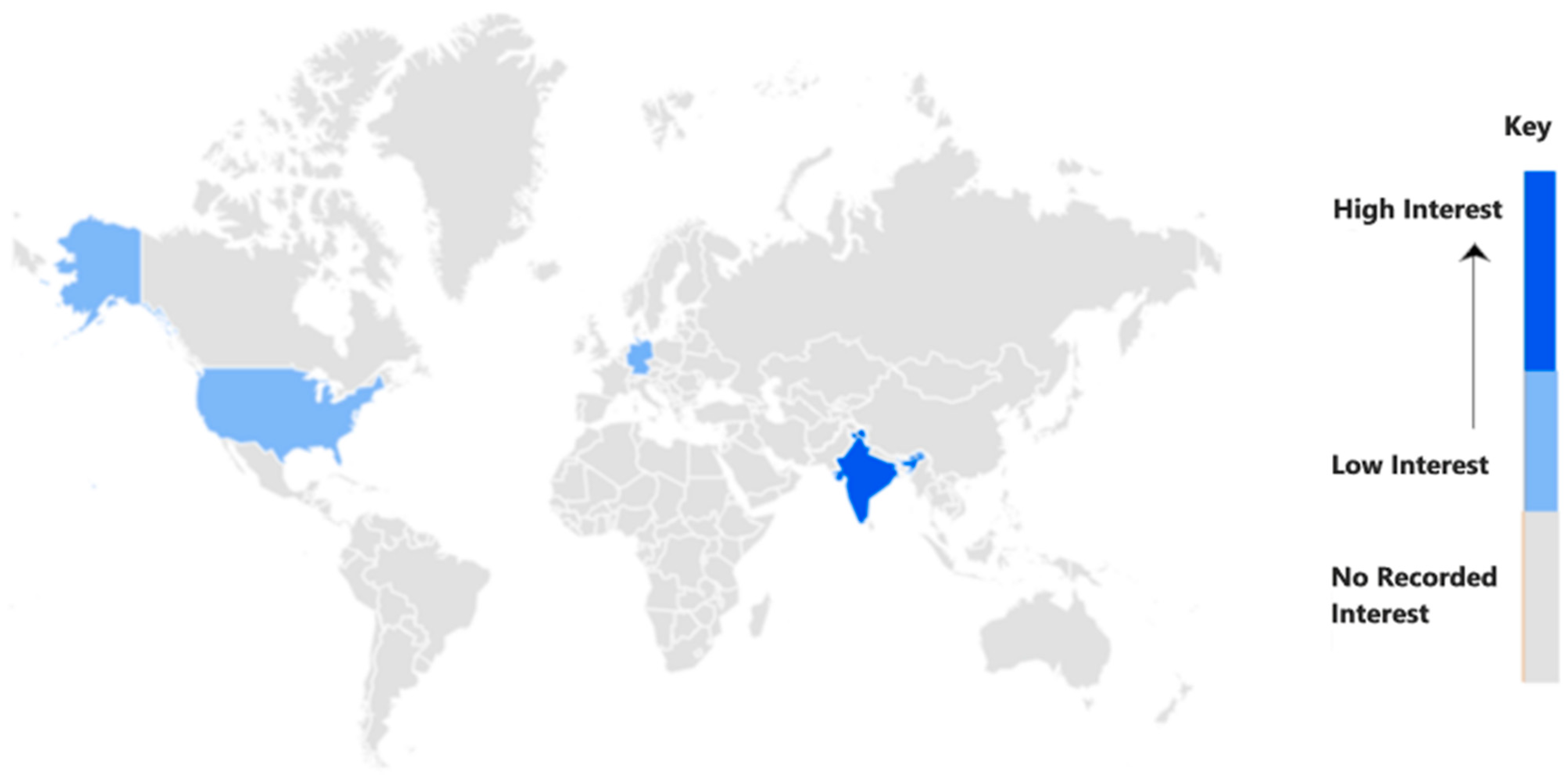

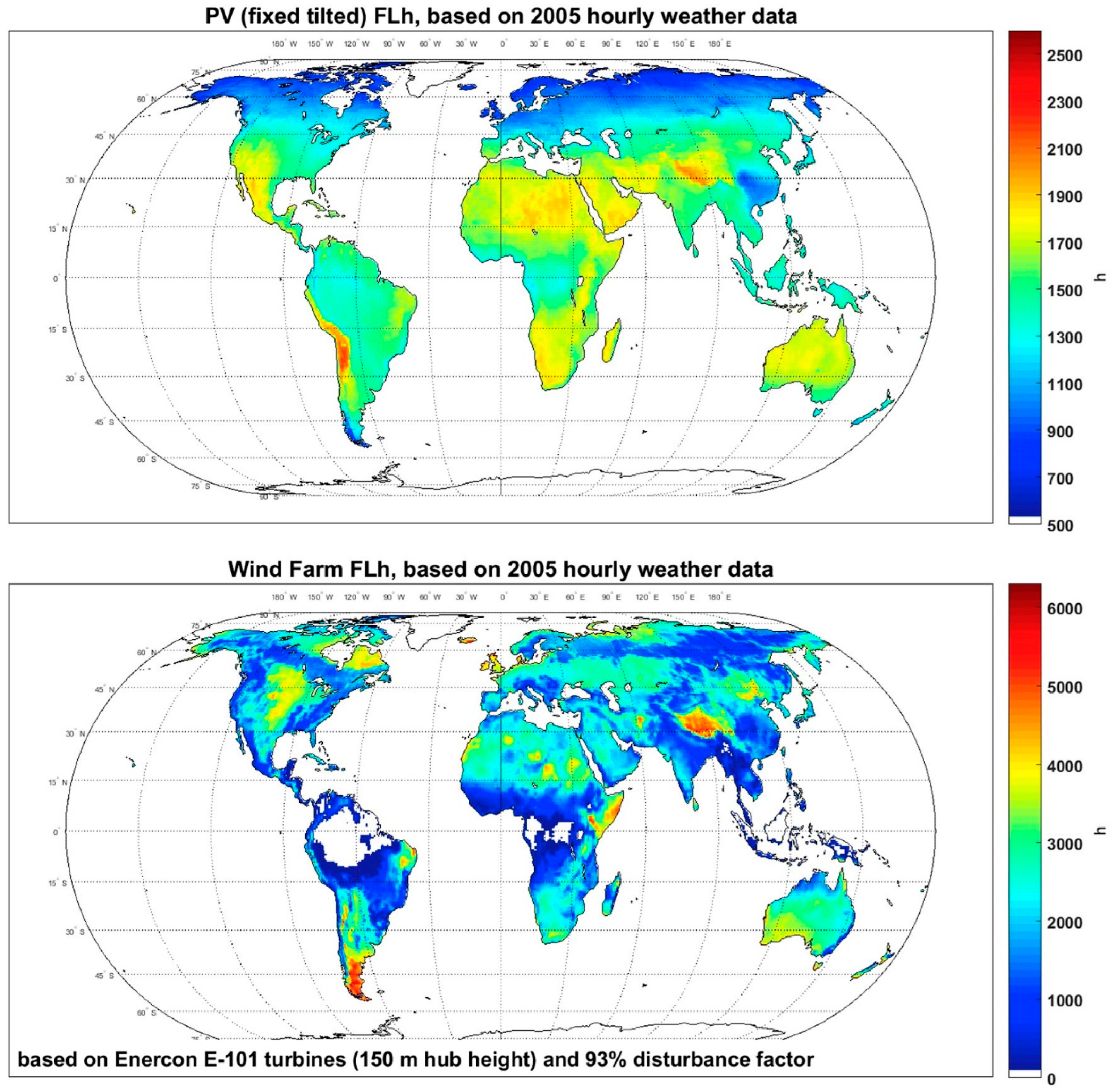
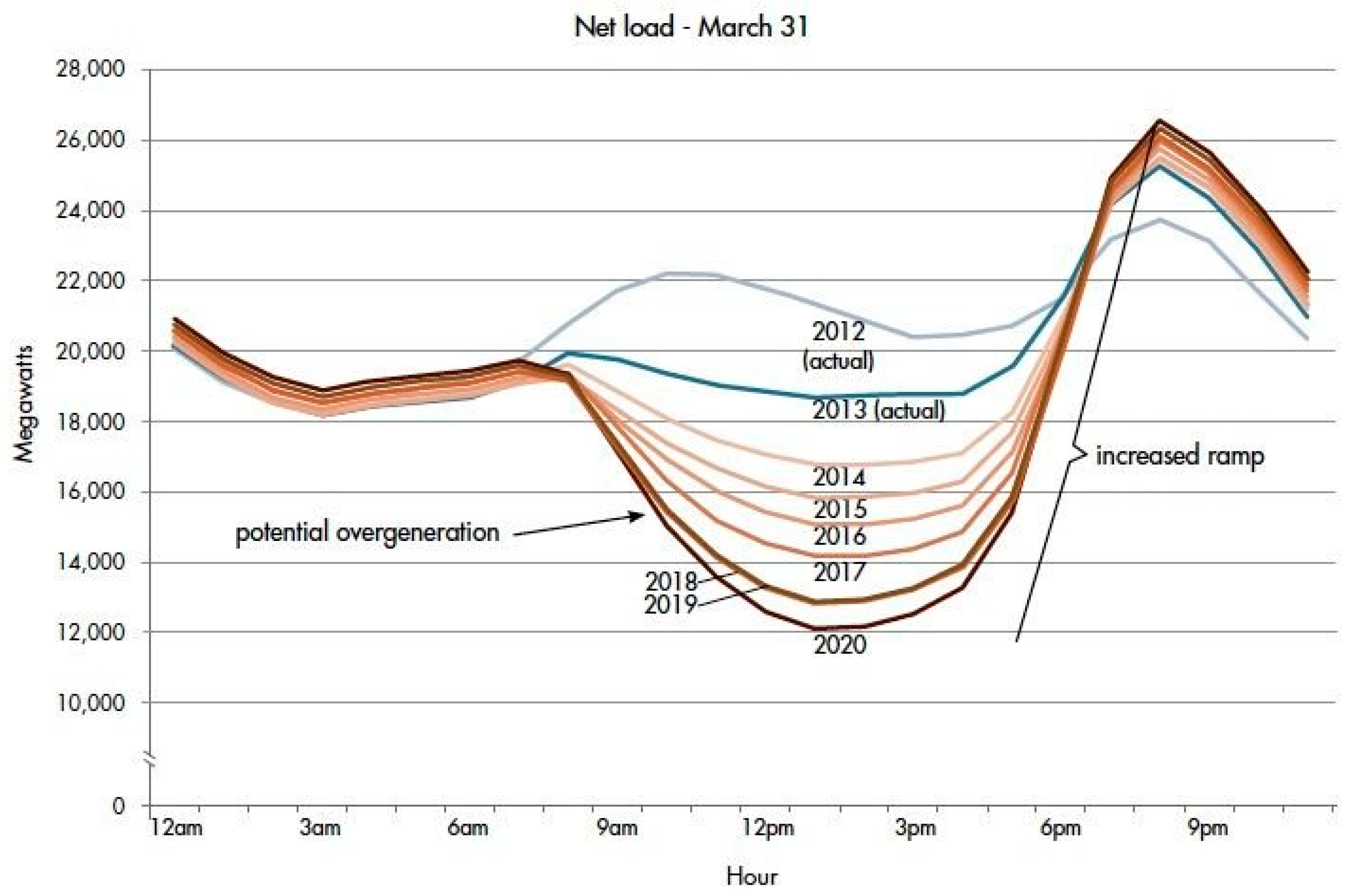
| Type | Levelized Cost of Electricity (LCOE) | Region | Year |
|---|---|---|---|
| Utility-Scale PV | EUR 24–57/MWh (USD 24.43–58.02/MWh) | Europe | 2019 |
| PV | USD 25–40/MWh | US | 2022–2024 (Estimated in 2021) |
| Onshore Wind | USD 18–55/MWh | US | 2022–2024 (Estimated in 2021) |
| PV | USD 45/MWh | US | 2022 |
| Onshore Wind | USD 46/MWh | US | 2022 |
| PV–Wind | USD 0.1/kWh | Zimbabwe | 2020 (Hypothetical) |
| Facility | Generators | Mean Daily Load [kWh] | Operating Since |
|---|---|---|---|
| Rappenecker Hof | PV–Diesel and Wind | 9 | 1987 |
| Meiler Htitte | PV–Diesel and Wind | 2 | 1990 |
| Rotwandhaus | PV–Diesel and Wind | 30 | 1992 |
| Country | Selected Policies |
|---|---|
| Denmark | Old wind turbine solar plants are forbidden from being hybridized. |
| Germany | Electricity storage for 20 years is exempted from grid charges. |
| Greece | Regulatory framework exists to restrict minimum guaranteed power. For storage facilities, annual grid energy stored by the hybrid plant is forbidden to be more than 30% of that required to fully charge the storage device. The RES-to-storage capacity ratio must not be above 1.2. |
| Ireland | In 2020, Ireland’s Department of the Environment, Climate and Communications (DECC) considered policy advice and economic suggestions to promote the development of new renewable energy facilities, particularly hybrid solar–wind and storage projects. |
| India | India formulated a national wind–solar HPP policy in 2017. The policy is continually being adjusted to cover various storage options. The policy also covers grid connection capacity substation utilization and storage minimums. |
Publisher’s Note: MDPI stays neutral with regard to jurisdictional claims in published maps and institutional affiliations. |
© 2022 by the authors. Licensee MDPI, Basel, Switzerland. This article is an open access article distributed under the terms and conditions of the Creative Commons Attribution (CC BY) license (https://creativecommons.org/licenses/by/4.0/).
Share and Cite
Babaremu, K.; Olumba, N.; Chris-Okoro, I.; Chuckwuma, K.; Jen, T.-C.; Oladijo, O.; Akinlabi, E. Overview of Solar–Wind Hybrid Products: Prominent Challenges and Possible Solutions. Energies 2022, 15, 6014. https://doi.org/10.3390/en15166014
Babaremu K, Olumba N, Chris-Okoro I, Chuckwuma K, Jen T-C, Oladijo O, Akinlabi E. Overview of Solar–Wind Hybrid Products: Prominent Challenges and Possible Solutions. Energies. 2022; 15(16):6014. https://doi.org/10.3390/en15166014
Chicago/Turabian StyleBabaremu, Kunle, Nmesoma Olumba, Ikenna Chris-Okoro, Konyegwachie Chuckwuma, Tien-Chien Jen, Oluseyi Oladijo, and Esther Akinlabi. 2022. "Overview of Solar–Wind Hybrid Products: Prominent Challenges and Possible Solutions" Energies 15, no. 16: 6014. https://doi.org/10.3390/en15166014
APA StyleBabaremu, K., Olumba, N., Chris-Okoro, I., Chuckwuma, K., Jen, T.-C., Oladijo, O., & Akinlabi, E. (2022). Overview of Solar–Wind Hybrid Products: Prominent Challenges and Possible Solutions. Energies, 15(16), 6014. https://doi.org/10.3390/en15166014





